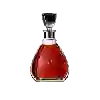
Winery Berta MaillolBanyuls Traditionnel
This wine generally goes well with beef and mature and hard cheese.
Food and wine pairings with Banyuls Traditionnel
Pairings that work perfectly with Banyuls Traditionnel
Original food and wine pairings with Banyuls Traditionnel
The Banyuls Traditionnel of Winery Berta Maillol matches generally quite well with dishes of beef or mature and hard cheese such as recipes of tunisian molokheya or gratin comtois.
Details and technical informations about Winery Berta Maillol's Banyuls Traditionnel.
Discover the grape variety: Pinot
Pinot blanc is a grape variety that originated in France (Burgundy). It produces a variety of grape specially used for wine making. It is rare to find this grape to eat on our tables. This variety of grape is characterized by small to medium sized bunches, and small to medium sized grapes. Pinot Blanc can be found in many vineyards: Alsace, South-West, Cognac, Bordeaux, Burgundy, Loire Valley, Champagne, Languedoc & Roussillon, Lorraine, Jura, Beaujolais, Rhone Valley, Provence & Corsica, Savoie & Bugey.
Last vintages of this wine
The best vintages of Banyuls Traditionnel from Winery Berta Maillol are 2012
Informations about the Winery Berta Maillol
The Winery Berta Maillol is one of of the world's greatest estates. It offers 19 wines for sale in the of Banyuls to come and discover on site or to buy online.
The wine region of Banyuls
Banyuls wines come from the South-eastern Part of Roussillon, in the south of France, in the lower Pyrenees, a few kilometres from the Spanish border. These naturally Sweet wines are consumed both as an aperitif and as a dessert. They come in a wide range of hues, from GoldenGreen (Banyuls Blanc) to Amber (Banyuls Ambré) to the intense garnet of the standard Banyuls Rouge. Unusually among the natural sweet wines of France, all Banyuls wines are made primarily from Grenache grapes of various colors.
The wine region of Languedoc-Roussillon
Languedoc (formerly Coteaux du Languedoc) is a key appellation used in the Languedoc-Roussillon wine region of southern France. It covers Dry table wines of all three colors (red, white and rosé) from the entire region, but leaves Sweet and Sparkling wines to other more specialized appellations. About 75% of all Languedoc wines are red, with the remaining 25% split roughly down the middle between whites and rosés. The appellation covers most of the Languedoc region and almost a third of all the vineyards in France.
The word of the wine: Sparkling
Equivalent to effervescent, this term is used among others to designate the "natural sparkling wines" produced in the Montlouis appellation.














